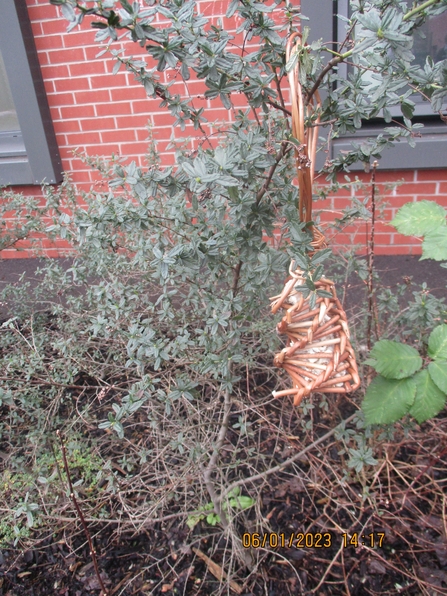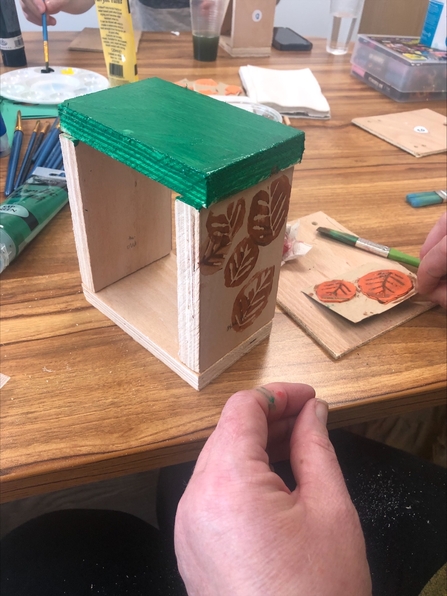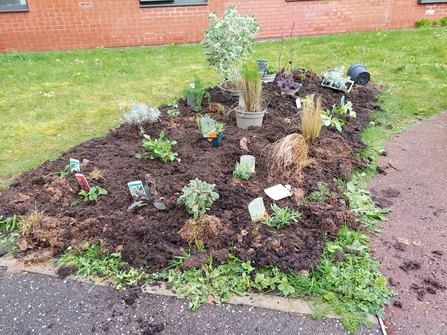How did it all begin?
The hospital originally got in touch with us to find out how patients could get involved in nature. However, when we went to chat with the patients, it wasn’t trips out that were a priority for them but instead they wanted to see the ward gardens improved with more native plants and more wildlife! Beyond the walls of the garden they had seen so many insects, birds and even foxes, but none of the wildlife came into the ward gardens space. From these initial discussions it was clear that we were all keen to work together to improve the two ward gardens. Using ideas from the patients, sharing our knowledge and working with the staff we set about finding out what was practical to in the space and devising some plans. Led by the patients ideas we began some creative workshops to support the patients to make willow bird feeders and bee homes for the gardens.
What has been the impact so far?
Connecting to nature and seeing wildlife in the garden has been a really important outcome for the patients that we have connected to as part of this project. Pete, shared how he believes each animal has a spirit, as a hoverfly came past he described it as nature saying hello and was pleased to be out connecting with the earth and sowing seeds to grow. As we shared ideas for the garden, the patients shared their excitement for planting in the garden and wanted feeders to provide for the blue tit and robin that sit on the fence, but do not have anywhere to land. Staff too have been getting involved, Sim even joined us on her lunch break as she was so keen to come and help in the garden!
What sorts of things have the patients and staff done to help wildlife?



